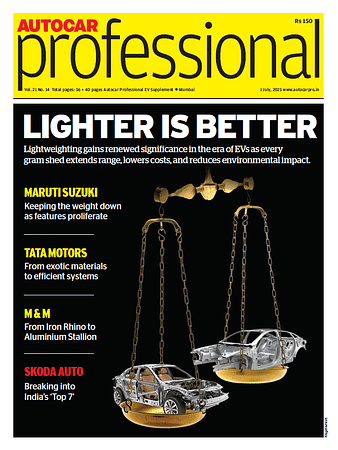Continental develops cost-optimised smart cockpit high-performance computer system
Tier 1 supplier claims cockpit HPC system has speedy time to market of just 18 months from order to start of production.
Continental has developed a high-performance computer (HPC) that offers ideally adapted system performance for a pre-integrated set of functions in vehicles. It’s targeted at a balance between user experience, system performance, costs and short development time. A key highlight is a fast time to market – from order to start of production in 18 months.
With this development, Continental is showcasing its proven expertise in domain-specific and cross-domain HPCs and positioning itself as one of the leading technology companies in the software-defined vehicle (SDV) market trend and in the management of complex HPC projects.
"Continental provides the automotive market with a comprehensive range of HPC solutions. With the Smart Cockpit HPC, we now offer our customers the opportunity to bring an increasingly automated and exciting mobility experience to the road in a cost-optimised way and with short development times," said Jean-Francois Tarabbia, head of the Architecture and Networking business area at Continental.
The Smart Cockpit HPC convinces due to its ideally adapted system performance for a pre-integrated function set. It impresses with fast response times as well as a smooth user interface even for cross-domain functions. This approach enables vehicle manufacturers to minimise costs and time expenditure in the development phase. Pre-integrated, state-of-the-art cluster and infotainment functions can minimise hardware costs in the cockpit area.
Extensive function integration
The Smart Cockpit HPC enables the integration of various domains and functions, such as cluster, infotainment – with an interface to an Android Operating System - (display, radio, phone, phone-mirroring and navigation) and Advanced Driver-Assistance Systems (ADAS).
By combining all cluster and infotainment functions in one box, the Smart Cockpit HPC reduces the number of previously installed control units and extensive wiring harnesses. This significantly reduces the complexity of the vehicle architecture.
The system is designed for the typical configuration of two displays for the centre stack and the instrument cluster, but can be expanded to include up to three displays, e.g. a head-up display. Even though the Smart Cockpit HPC is a preconfigured solution, customer-specific adaptations can still be made regarding human-machine and hardware interfaces.
RELATED ARTICLES
Volkswagen Group honours 10 outstanding suppliers, strengthens strategic collaboration
The 21st Volkswagen Group Award recognized suppliers for outstanding performance and contribution over the past year. VW...
Volkswagen Group sells 465,500 BEVs worldwide in first-half 2025, up 47%
With strong growth in Europe (+89%) and the USA (+24%), despite a sales decline in China (-34%), the VW Group’s global B...
Skoda begins sale of made-in-India CKD Kushaq in Vietnam
Before production started, pre-series Kushaq vehicles covered over 330,000 kilometres on a variety of Vietnamese roads a...





 By Autocar Professional Bureau
By Autocar Professional Bureau
 21 Jun 2023
21 Jun 2023
 5801 Views
5801 Views









